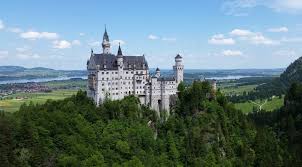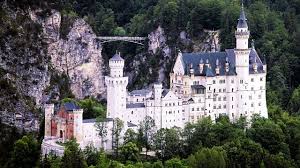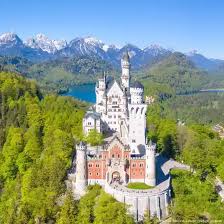
By Tequila Mockingbird
Los Angeles, CA (The Hollywood Times) 1/11/25 – I plan to return to Bavaria to finally fulfill an obsession that has lingered since my last visit—the captivating Neuschwanstein Castle. My fascination with Ludwig’s Castle is palpable, but on my previous trip, I made a small yet costly mistake: I never got to see the inside of Ludwig’s iconic fortress. A friend and traveling companion mistakenly booked tickets for the wrong date, and as we stood outside, hoping for some leniency, the guards remained unwavering in their refusal. We were left, quite literally, like beggars at the gates.
 While I was able to admire the castle from the outside, the experience left me with a strong desire to return—and this time, I plan to see all three of King Ludwig II’s extraordinary castles.
While I was able to admire the castle from the outside, the experience left me with a strong desire to return—and this time, I plan to see all three of King Ludwig II’s extraordinary castles.
King Ludwig II of Bavaria, often referred to as the “Fairy Tale King,” was an artist through and through, despite his eccentricities. His passion for grand, fantastical architecture lives on in the castles he built.
Here’s a glimpse at his three masterpieces:
- Neuschwanstein Castle: The most famous of the trio, Neuschwanstein is a breathtaking structure perched on a rocky hilltop. Inspired by the operas of Richard Wagner, the castle is adorned with ornate interiors, towering spires, and sweeping views of the surrounding landscape. It’s the ultimate fairy-tale escape.
- Hohenschwangau Castle: Ludwig’s childhood home, Hohenschwangau is a more traditional castle that offers a lovely, serene experience. Located near Neuschwanstein, it offers stunning views of the Bavarian countryside.
- Linderhof Palace: This smaller but no less extravagant palace features lush gardens, intricate grottos, and a miniature version of the Hall of Mirrors from Versailles. Linderhof is an intimate yet lavish retreat that showcases Ludwig’s extravagant tastes.
These castles are more than just tourist attractions; they offer a unique window into Ludwig’s eccentric personality and his deep fascination with fantasy and escapism.
 There is speculation that King Ludwig II was gay, given his relationships with soldiers and his reluctance to marry. His death remains shrouded in mystery and intrigue. Officially, it was ruled a drowning, but theories abound—some suggest he was shot while trying to escape, with rumors of a bullet hole in his jacket. His psychiatrist, who was with him at the time, also died under suspicious circumstances. Ludwig’s government, disapproving of his pacifist ideals and extravagant artistic pursuits, may have had a hand in his demise, not wanting him to continue building his fairy-tale castles. They saw art as an abomination, while they celebrated war as a triumph.
There is speculation that King Ludwig II was gay, given his relationships with soldiers and his reluctance to marry. His death remains shrouded in mystery and intrigue. Officially, it was ruled a drowning, but theories abound—some suggest he was shot while trying to escape, with rumors of a bullet hole in his jacket. His psychiatrist, who was with him at the time, also died under suspicious circumstances. Ludwig’s government, disapproving of his pacifist ideals and extravagant artistic pursuits, may have had a hand in his demise, not wanting him to continue building his fairy-tale castles. They saw art as an abomination, while they celebrated war as a triumph.
For Ludwig, however, his castles were not just structures—they were a declaration of his vision, his art, and his rebellion against the mundane. Now, it’s my turn to experience that vision up close.